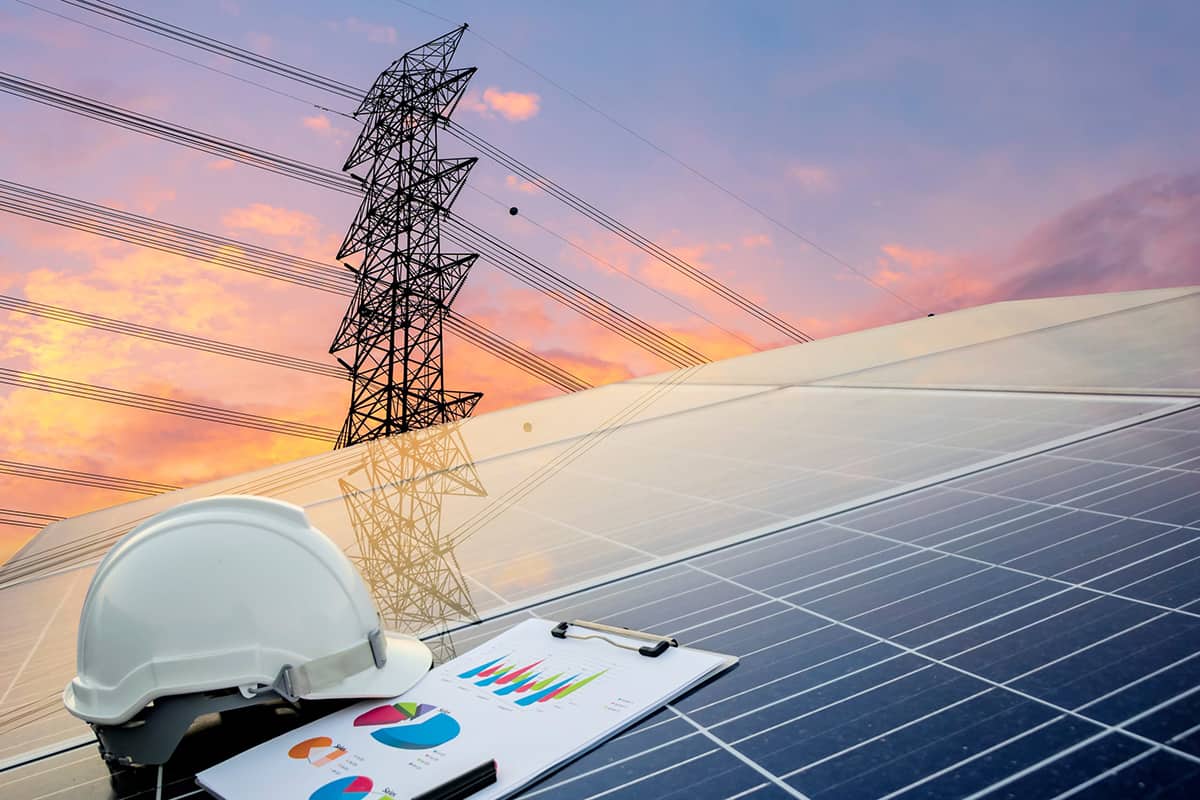Report: Companies leading the renewable energy buying revolution should participate in the transmission planning processes
Participation could help ensure companies can deliver on their own clean energy targets, as well as shape the grid’s future.
Large U.S. companies are acting on renewable energy goals at a record pace. Through August of this year, they have already procured nearly 4 gigawatts of utility-scale wind and solar capacity — breaking the previous full-year record, set in 2015, by nearly 750 megawatts.
But the transmission infrastructure pipeline is likely not sufficient to meet corporations’ future low-cost clean energy needs. And as a new report highlights, if major renewable energy consumers want to ensure the lowest-cost clean energy is available for their future energy purchases, they need to start participating in the transmission planning processes.
“Companies buying affordable clean energy today are benefitting from yesterday’s transmission plans, said John Kostyack, Executive Director of the Wind Solar Alliance, which produced the new report. “To meet their sustainability targets for the next decade, and to make low-cost renewable power accessible for themselves and other customers, they need to join efforts to jump-start a new era of transmission planning.”
The report, Corporate Renewable Procurement and Transmission Planning: Communicating Demand to RTOs May Yield More Low-cost Options, points out that more than 100 U.S. corporate buyers —members of the Renewable Energy Buyers Alliance — have set a goal of purchasing 60 gigawatts of new U.S. renewable energy capacity by 2025. So far, since 2013, the companies have procured just over 13 gigawatts of renewable power.
The report outlines actions major buyers of renewable energy can take to make sure renewable power is accessible when they need it. One option is for companies to follow Walmart’s lead and join regional transmission organizations (RTOs). The world’s largest retailer, which is working toward a goal of 100 percent clean energy, joined the SPP Regional Transmission Organization in August.
Other major renewable energy users might choose to collaborate with transmission planners in other ways, such as paying a utility a “green tariff,” or working together to develop a needed transmission line. A third option is for companies to work together through trade and advocacy organizations to help planners shape the grid.
“Incorporating corporate renewable energy demand into transmission planning will become increasingly important as more companies act on their goals,” said Hannah Hunt, Deputy Director for Electricity Policy and Demand at the American Wind Energy Association. “Engaging large buyers of renewable energy with transmission planners will be an efficient way to ensure they get the information they need to plan for the future.”
The newly rebranded Wind Solar Alliance (WSA) is releasing Corporate Renewable Procurement and Transmission Planning at the Renewable Energy Buyers Alliance (REBA) Summit in Oakland, California on Oct. 15. The report builds on an earlier report that WSA — then known as the Wind Energy Foundation — produced with David Gardiner and Associates (DGA) earlier this year, which exposed the scope of the problem. It found that while corporate demand for renewable energy is growing fast — in part because of record low rates that reflect plummeting costs for wind and solar technology — transmission planning processes are not accounting for corporations’ large and growing demand for renewable power. That could result in a lack of new infrastructure to supply that demand.
“Transmission expansion is already falling short of what is needed to meet future corporate demand for wind and solar,” said David Gardiner, President of DGA and co-author of the earlier report. “Large corporate buyers want access to the least expensive wind and solar resources, most of which are located between the Rocky Mountains and the Mississippi River, far from most business operations. We need to step up our efforts to build transmission to deliver cheap, clean wind and solar power to America’s factories, data centers, and stores.”
The new report offers an update on the problem, and proposes solutions, including inter-regional planning that spans RTOs.
About the Wind Solar Alliance
The Wind Solar Alliance (WSA) is a nonprofit organization dedicated to accelerating the transition to renewable energy as a means of strengthening the U.S. economy and reducing the environmental impacts of our energy use. WSA uses research, communications, and advocacy to raise awareness of the benefits of renewable energy and the need for energy and infrastructure policies that recognize and reward those benefits. Visit www.windsolaralliance.org to learn more.
